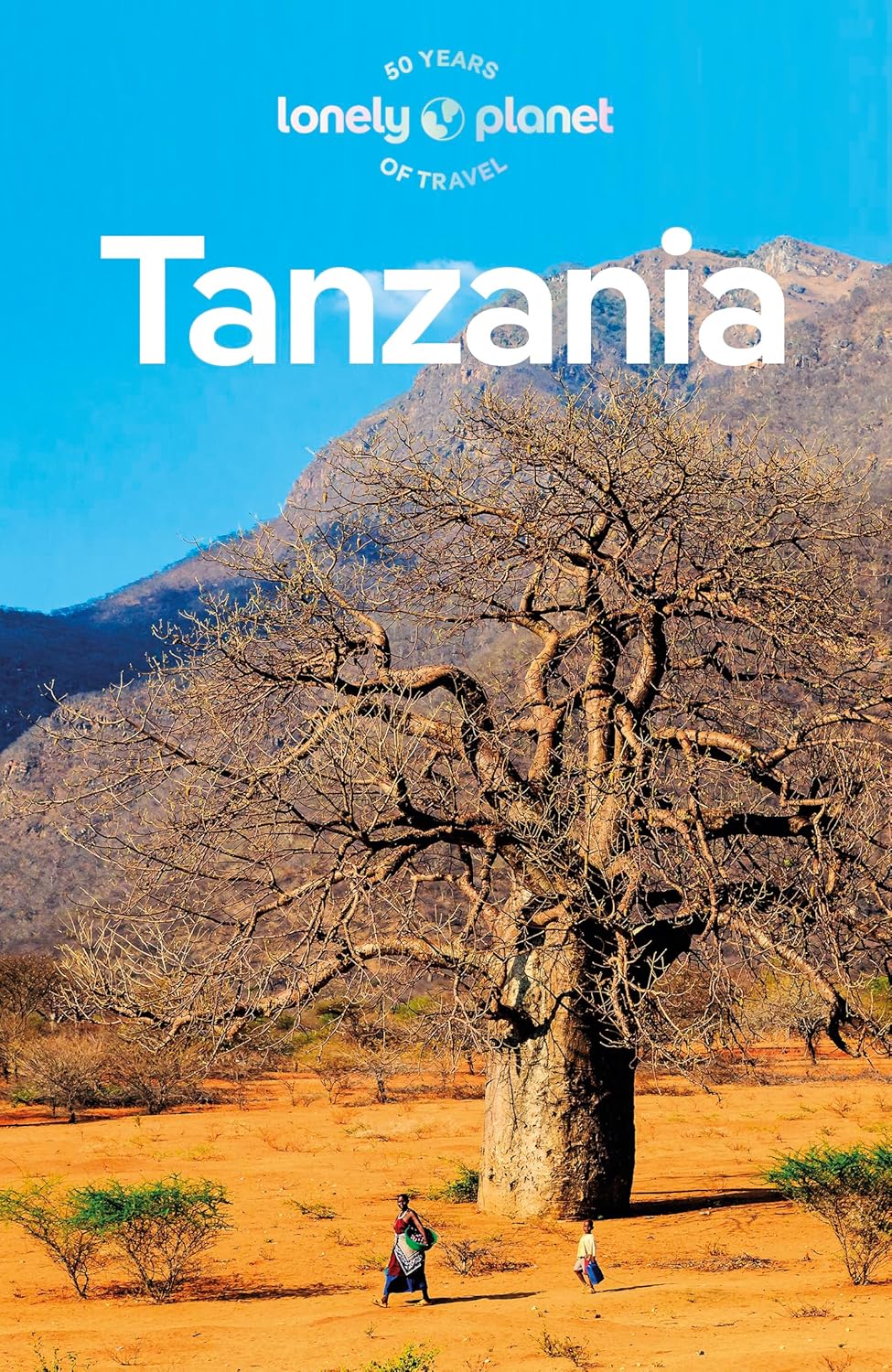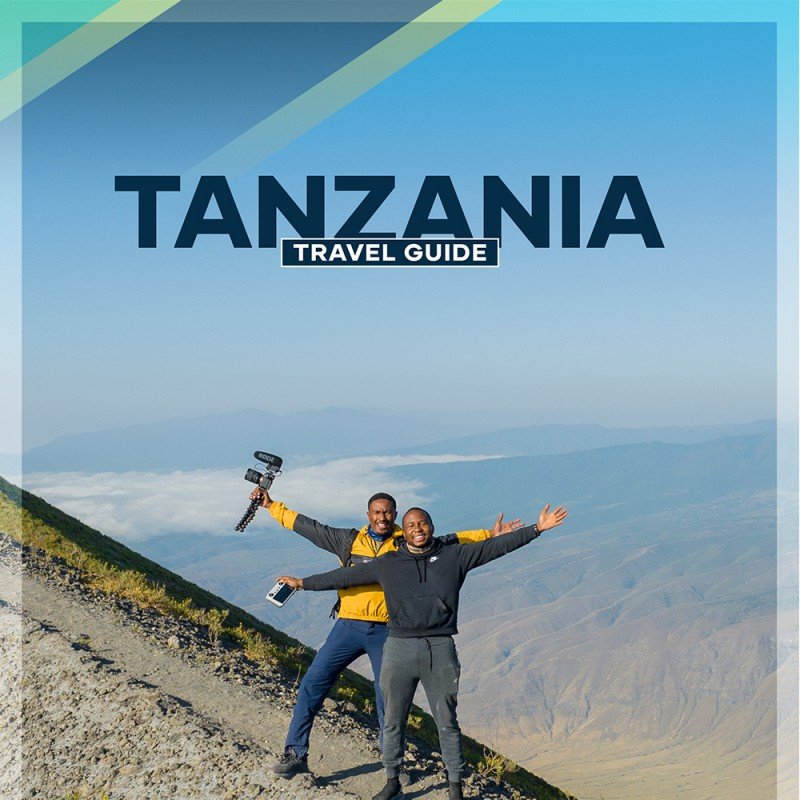
Tanzania, a land where the wild heart of Africa beats strongest, offers an unparalleled journey into the very essence of nature and culture. From the snow-capped peak of Mount Kilimanjaro to the vast plains of the Serengeti, teeming with life, and the spice-scented alleys of Zanzibar, this East African nation is a destination of dreams. More than just a collection of breathtaking landscapes, Tanzania is a country rich in history, vibrant in culture, and welcoming in spirit. This comprehensive guide will equip you with everything you need to plan an unforgettable adventure in Tanzania.
Top Attractions: Where Dreams Take Flight
Tanzania’s draw lies in its incredible diversity, offering a smorgasbord of experiences for every type of traveler.

Related Articles about Tanzania: An Odyssey into the Heart of Africa:
- Brazil: A Symphony of Sun, Samba, and Unforgettable Adventures
- Switzerland: A Symphony of Peaks, Lakes, and Timeless Charm
- The Netherlands: A Journey Through Windmills, Canals, and Centuries of Charm
- La Dolce Vita Awaits: Your Ultimate Travel Guide to Italy
- Chile: A Symphony of Extremes – Your Comprehensive Travel Guide
-
The Serengeti National Park: Witness the Greatest Show on Earth
Synonymous with African safaris, the Serengeti is a UNESCO World Heritage Site and the stage for the Great Migration, where millions of wildebeest, zebras, and gazelles thunder across the plains in search of greener pastures. This epic journey, often crossing the Grumeti and Mara Rivers, is one of the most spectacular wildlife events on the planet. Beyond the migration, the Serengeti boasts the highest concentration of large predators in Africa, making every game drive an opportunity to spot lions, leopards, cheetahs, and hyenas in their natural habitat. Its endless horizons, dotted with acacia trees and granite kopjes, are iconic. -
Ngorongoro Conservation Area: A Natural Wonder
Often dubbed "Africa’s Garden of Eden," the Ngorongoro Crater is a vast, unbroken caldera, a natural enclosure for an astonishing concentration of wildlife. Descending into the crater floor feels like entering a lost world, where the "Big Five" (lion, leopard, elephant, rhino, buffalo) are readily found, often within a single game drive. The crater also hosts a large population of flamingos on Lake Magadi and offers unparalleled opportunities for close-up wildlife photography against a stunning backdrop. It’s a testament to nature’s resilience and beauty. -
Mount Kilimanjaro: Africa’s Rooftop
Standing majestically at 5,895 meters (19,341 feet), Mount Kilimanjaro is the highest peak in Africa and the world’s highest free-standing mountain. Conquering its summit is a life-changing challenge, attracting trekkers from around the globe. Several routes cater to different fitness levels and timeframes, each offering diverse ecosystems from rainforest to alpine desert and ultimately, glacial landscapes. The feeling of watching the sunrise from Uhuru Peak is an achievement etched forever in memory. -
Zanzibar: The Spice Island & Tropical Paradise
Off Tanzania’s coast lies the archipelago of Zanzibar, a melting pot of African, Arab, Indian, and European cultures. Its historic capital, Stone Town, is a UNESCO World Heritage Site with winding alleys, ancient buildings, bustling bazaars, and intricately carved doors that tell tales of its rich trading past. Beyond Stone Town, Zanzibar offers pristine white-sand beaches, crystal-clear turquoise waters, and vibrant coral reefs perfect for snorkeling and diving. Spice tours, dhow cruises, and encounters with red colobus monkeys add to its allure. -
Tarangire National Park: The Land of Giants
Known for its enormous elephant herds and iconic baobab trees, Tarangire National Park offers a distinct safari experience, particularly during the dry season when the Tarangire River becomes the sole water source. The park’s diverse landscapes include rolling hills, acacia woodlands, and vast swamps, attracting a remarkable variety of birdlife and other animals like lions, giraffes, and zebras. -
Lake Manyara National Park: Tree-Climbing Lions
Though smaller than its counterparts, Lake Manyara is incredibly diverse, boasting a shallow soda lake that attracts thousands of flamingos and other waterfowl. It’s famous for its unique tree-climbing lions, often seen lounging in acacia trees, as well as large baboon troops, hippos, and a dense forest canopy. -
Ruaha National Park & Selous Game Reserve: The Untamed South
For those seeking an off-the-beaten-path safari, the vast southern parks like Ruaha and Selous offer a more remote and wild experience. Ruaha is Tanzania’s largest national park, known for its rugged, untamed landscapes and large elephant populations, along with rare species like the African wild dog. Selous, one of the world’s largest protected areas, offers boat safaris on the Rufiji River, walking safaris, and fly camping, providing an intimate encounter with the wilderness. -
Gombe Stream & Mahale Mountains National Parks: Chimpanzee Encounters
Nestled on the shores of Lake Tanganyika, these remote parks offer a unique opportunity for chimpanzee trekking. Gombe is where Jane Goodall conducted her pioneering research, providing an incredible chance to observe these intelligent primates in their natural habitat.

A Glimpse into History: The Cradle of Humanity
Tanzania’s history is as deep and varied as its landscapes. It is home to the Olduvai Gorge, often called "the Cradle of Mankind," where some of the earliest human fossils and tools were discovered by the Leakeys, pushing back the timeline of human evolution.
For centuries, the East African coast, including Zanzibar, thrived as a pivotal hub in the Indian Ocean trade network. This led to the rise of the Swahili civilization, a unique blend of indigenous Bantu, Arab, Persian, and Indian cultures, evident in the language, architecture, and cuisine. Stone Town in Zanzibar stands as a living testament to this rich mercantile past, with its sultan palaces, slave trade history, and spice routes.
In the late 19th century, mainland Tanzania became part of German East Africa, a colonial territory. After World War I, it transitioned to British rule as Tanganyika. The struggle for independence was spearheaded by Julius Nyerere, who led the country to peaceful independence in 1961. In 1964, Tanganyika united with Zanzibar to form the United Republic of Tanzania, with Nyerere becoming its first president. His philosophy of "Ujamaa" (familyhood) promoted self-reliance and social equality, leaving a lasting legacy on the nation’s identity. Today, Tanzania is a stable, multi-party democracy, leveraging its natural wonders to foster sustainable tourism.
Best Time to Visit: Timing Your Tanzanian Adventure
The best time to visit Tanzania largely depends on your primary interests, as the country experiences distinct dry and wet seasons.
-
Dry Season (June to October): This is widely considered the best time for wildlife viewing. Animals congregate around permanent water sources, making them easier to spot. The vegetation is sparser, and the weather is generally cooler and drier, with fewer mosquitoes. This period also coincides with the Great Migration in the Serengeti (June-July in the western corridor, August-October in the northern Serengeti/Mara River crossings). It’s also ideal for Kilimanjaro treks and beach holidays in Zanzibar, though popular areas can be crowded.
-
Short Rains (November to December): Known as the "short rains," this period sees brief, localized showers, often in the late afternoon. The landscape becomes greener, making it excellent for birdwatching as migratory birds arrive. Wildlife viewing is still good, and it’s a great time for photography with lush backdrops and dramatic skies. Fewer tourists mean better deals on accommodations.
-
Long Rains (March to May): This is the low season due to heavy, prolonged rainfall. While some roads can become impassable, and certain camps may close, it’s a unique time for those seeking solitude and dramatic scenery. It’s the calving season in the Serengeti (February-March), offering incredible predator-prey action. Birdwatching is exceptional, and prices are significantly lower. Zanzibar can be very humid with strong rains, making beach activities less appealing.
For Kilimanjaro treks, the dry seasons (January-March and June-October) offer the most favorable weather conditions. For Zanzibar, any time outside of the long rains (March-May) is generally pleasant.
Getting There and Around: Navigating Tanzania
International Airports:
Tanzania has three main international airports:
- Julius Nyerere International Airport (DAR) in Dar es Salaam, the largest city.
- Kilimanjaro International Airport (JRO), strategically located between Arusha (the safari capital) and Moshi (the base for Kilimanjaro treks).
- Abeid Amani Karume International Airport (ZNZ) in Zanzibar.
Most international flights will arrive at DAR or JRO. From these hubs, travelers often take domestic flights or road transfers.
Domestic Transportation:
- Flights: For safaris, domestic flights are often the most efficient and comfortable option. Small bush planes connect major cities with airstrips in national parks (e.g., Arusha to Serengeti, Selous, Ruaha) and Zanzibar. This saves significant travel time on rough roads.
- Road:
- Safari Vehicles: If you book a safari, a 4×4 safari vehicle (usually a Land Cruiser or Land Rover) with a pop-up roof for game viewing is standard. Your tour operator will arrange this, including a professional driver-guide.
- Buses: For inter-city travel between major towns (e.g., Dar es Salaam to Arusha), long-distance buses are available and very affordable, though they can be slow and less comfortable.
- Dala-dalas: These are local minibuses, the primary mode of public transport within towns and for shorter inter-village routes. They are cheap but often overcrowded.
- Taxis: Available in towns and cities. Always agree on a fare before starting your journey. Ride-sharing apps like Bolt are also available in larger cities.
- Ferries: Regular ferry services operate between Dar es Salaam and Zanzibar, offering both fast catamarans and slower local boats. Booking in advance is recommended for the faster ferries.
Accommodation Options: From Bush to Beach
Tanzania offers a wide spectrum of accommodation, catering to every budget and style of travel.
- Luxury Safari Lodges & Tented Camps: For the ultimate safari experience, these options provide opulent comfort in the heart of the wilderness. Expect spacious rooms or luxurious tents with en-suite bathrooms, gourmet dining, infinity pools, and unparalleled service. Many are strategically located to offer direct wildlife viewing from your veranda. Examples include the Four Seasons Safari Lodge Serengeti or the Sanctuary Ngorongoro Crater Camp.
- Mid-Range Lodges & Camps: These strike a balance between comfort and affordability. You’ll find well-appointed rooms or comfortable permanent tents, good facilities, and excellent service, often with a unique character or stunning views. These are popular choices for standard safari packages.
- Budget-Friendly Options:
- Public Campsites: Available in many national parks, offering basic facilities for those who bring their own camping gear or are on budget camping safaris.
- Hostels & Guesthouses: Found in towns like Arusha, Moshi, and Stone Town, providing simple, clean rooms, often with shared facilities, ideal for backpackers and independent travelers.
- Basic Tourist Hotels: In larger towns, offering fundamental amenities at an affordable price.
- Boutique Hotels & Resorts (Zanzibar): On Zanzibar, you’ll find everything from charming boutique hotels in Stone Town to lavish beachfront resorts offering all-inclusive packages and a range of water sports.
- Kilimanjaro Huts/Tents: Trekkers on Kilimanjaro typically stay in basic mountain huts (Marangu route) or more rugged dome tents (other routes), provided by their trekking company.
Essential Travel Tips: Navigating Your Journey
To ensure a smooth and enjoyable trip, keep these practical tips in mind:
- Visas: Most foreign nationals require a visa to enter Tanzania. These can be obtained online in advance (e-Visa) or upon arrival at major entry points. Check the latest requirements for your nationality.
- Health & Vaccinations:
- Yellow Fever: A Yellow Fever vaccination certificate is mandatory if you are arriving from or transiting through a country with a risk of Yellow Fever transmission.
- Malaria: Tanzania is a malaria-risk area. Consult your doctor about anti-malarial prophylaxis. Use insect repellent (containing DEET), wear long sleeves and pants at dusk, and sleep under mosquito nets.
- Other Vaccinations: Ensure routine vaccinations (e.g., Tetanus, Diphtheria, Hepatitis A & B) are up to date.
- Travel Insurance: Comprehensive travel insurance covering medical emergencies, evacuation, and trip cancellations is highly recommended.
- Safety: Tanzania is generally safe for tourists, but always exercise caution.
- Keep valuables out of sight and use hotel safes.
- Avoid walking alone at night in unfamiliar areas.
- Book tours and transport through reputable operators.
- Be aware of your surroundings, especially in crowded markets.
- Money:
- The local currency is the Tanzanian Shilling (TZS).
- US Dollars (USD) are widely accepted for major tourist expenses (safari packages, park fees, high-end accommodations), but it’s advisable to have small denominations of TZS for local purchases and tipping.
- ATMs are available in major towns, but it’s wise to carry some cash, especially in remote areas.
- Credit Cards: Accepted at larger hotels and safari lodges, but often incur a surcharge.
- Tipping: Customary for guides, drivers, porters, and hotel staff. A general guideline is $10-20 per person per day for safari guides, and smaller amounts for hotel staff.
- Culture & Etiquette:
- Tanzanians are generally friendly and welcoming. A simple "Jambo" (hello) or "Mambo" (how are you, informal) will go a long way.
- Dress modestly, especially when visiting local villages, religious sites, or Stone Town in Zanzibar. Shoulders and knees should be covered.
- Always ask permission before taking photos of people.
- Bargaining is common in markets, but do so respectfully.
- Packing Essentials:
- Safari Gear: Layers of light, neutral-colored clothing (khaki, green, brown) to blend in and for varying temperatures. A warm jacket for early mornings/evenings. Wide-brimmed hat, sunglasses, high SPF sunscreen.
- Footwear: Comfortable walking shoes for safaris; sturdy hiking boots for Kilimanjaro; sandals for beach/town.
- Electronics: Binoculars (essential for safaris!), camera with zoom lens, power bank, universal adapter (Type G and Type D sockets are common).
- Other: Reusable water bottle, personal first-aid kit, insect repellent, headlamp/flashlight.
- Water: Drink only bottled or filtered water. Avoid tap water.
- Connectivity: Local SIM cards (e.g., Vodacom, Tigo, Airtel) are readily available and affordable for mobile data. Wi-Fi is common in hotels and lodges, but can be slow or unreliable in remote areas.
Conclusion: Your Tanzanian Adventure Awaits
Tanzania is more than just a destination; it’s an experience that awakens the senses and touches the soul. From the thrill of spotting a leopard in the Serengeti to the profound quiet of a sunrise over Kilimanjaro, and the vibrant pulse of Stone Town, it offers a tapestry of unforgettable moments. With careful planning and an open heart, you are poised to embark on an incredible odyssey into the heart of Africa, a journey that promises to be as enriching as it is exhilarating. Karibu Tanzania – Welcome to Tanzania, where adventure awaits!





